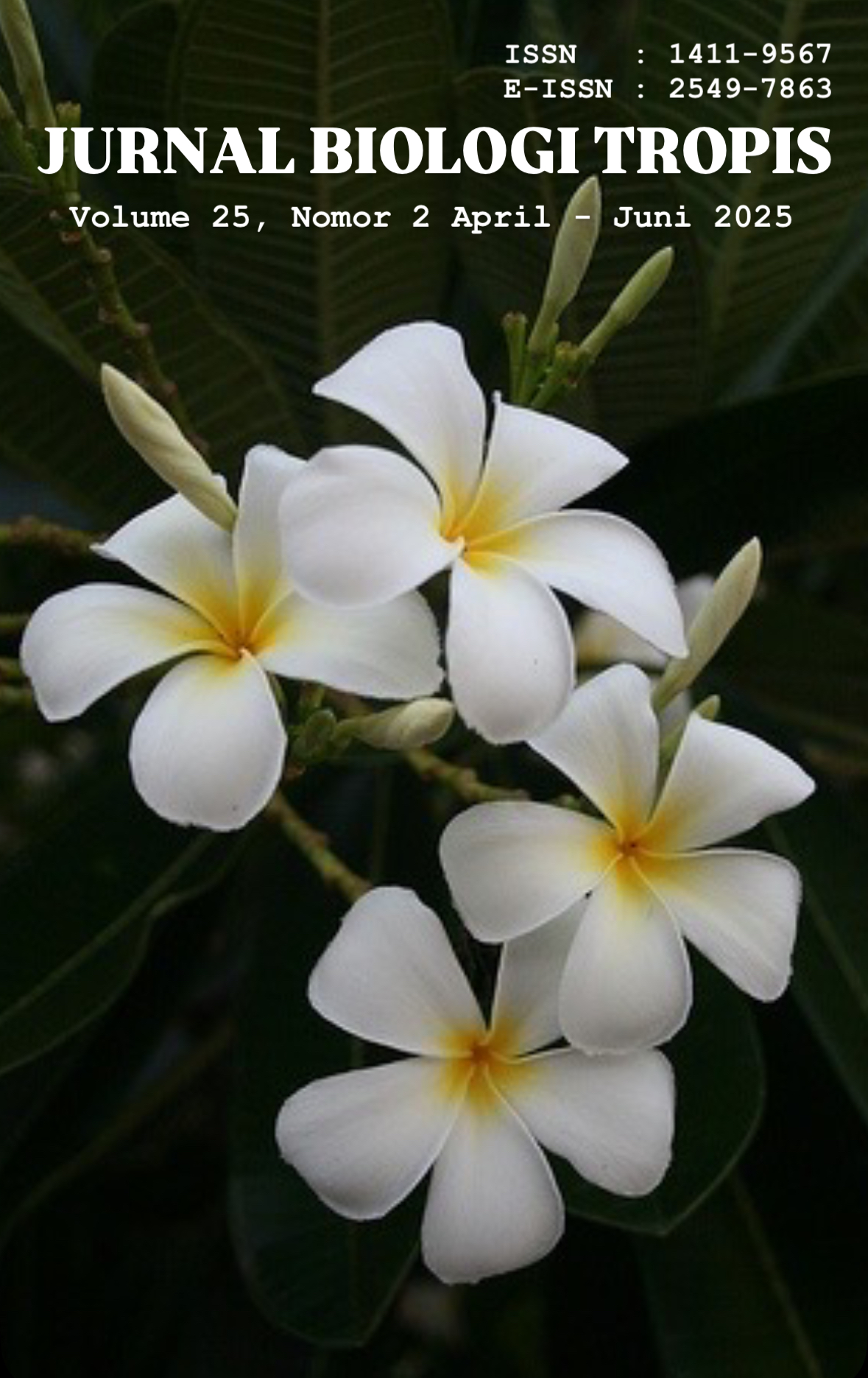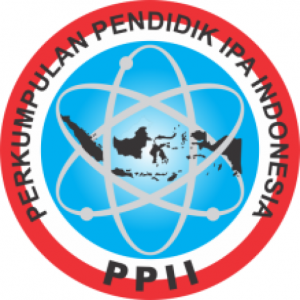Optimizing Bioelectricity Production from Thermophilic Bioelectrogens Consortium Using Agricultural Waste in Microbial Fuel Cells
Authors
Apriansa Apriansa , Irdawati IrdawatiDOI:
10.29303/jbt.v25i2.8853Published:
2025-05-20Issue:
Vol. 25 No. 2 (2025): April-JuniKeywords:
consortium; microbial fuel cell; thermophilic bioelectrigens; waste agricultural substratesArticles
Downloads
How to Cite
Downloads
Metrics
Abstract
Significant economic and population growth around the world has led to various problems, especially fossil fuel scarcity, energy production, as well as an increase in the volume of organic waste (agricultural, municipal, and industrial waste). As an alternative energy source, Microbial Fuel Cell (MFC) was chosen due to its promising prospects. The use of thermophilic bacteria and consortiums were chosen for their potential advantages in MFC systems. This study aims to explore the potential of thermophilic bioelectrogenous bacterial isolates of Sungai Sapan Aro (SSA) consortium 14&16 in producing bioenergy using various agricultural waste substrates (corn cob, rice straw, rice husk, and glucose as control). The results showed no significant difference in the use of agricultural waste substrates in the MFC system. Quantitatively, corn cobs produced voltages almost equivalent to glucose (control), while rice straw and rice husk produced lower voltages. The resulting voltages were glucose (0.59467 V), corn cob (0.57633 V), rice straw (0.43300 V), and rice husk (0.40400 V). The results of this study show better performance compared to previous studies in the field of electricity generation through MFCs.
References
Arigeni, R., Kirom, M. R., & Qurthobi, A. (2019). Analisis Produksi Energi Listrik Pada Microbial Fuel Cell Menggunakan Substrat Tongkol Jagung Dengan Kontrol Suhu. eProceedings of Engineering, 6(1): 1091-1096. https://openlibrarypublications.telkomuniversity.ac.id/index.php/engineering/article/view/8883/0
Barua, P. K., & Deka, D. (2010). Electricity Generation from Biowaste Based Microbial Fuel Cell. International Journal of Energy, Information, and Communications, 1(1): 77-92. https://www.researchgate.net/publication/281767156_Electricity_generation_from_biowaste_based_microbial_fuel_cells
Bazargan, A., Wang, Z., Barford, J. P., Saleem, J., & McKay, G. (2020). Optimization of the Removal of Lignin and Silica from Rice Husks with Alkaline Peroxide. Journal of Cleaner Production, 260. 120848. https://doi.org/10.1016/j.jclepro2020.120848
Bond, D. R. & Lovley, D. R. (2003). Electricity Production by Geobacter sulfurreducens Attached to Electrodes. Appl Environ Microbiology 69(3):1548-1555. DOI: 10.1128/AEM.69.3.1548-1555.2003
Cao, L., Sun., H., Ma, Y., Lu, M., Zhao, M., Li, E., & Liu, Y. (2023). Analysis and Enhancement of the Energy Utulization Efficiency of Corn Stover using Strain Lsc-8 in a Bioelectrochemical System. Microbial Cell Factories, 22 (54). https://microbialcellfactories.biomedcentral.com/articles/10.1186/s12934-023-02058-6
Chae, K. J., Choi, M. J., Lee, J. W., Kim, K. Y & Kim, I. S. (2009). Effect of Different Substrates on Performance, Bacterial Diversity, and Bacterial Viability in Microbial Fuel Cell. Bioresource Technology, 3518-3525. DOI :10.1016/j.biortech.2009.02.065.
Chandra, R., Takeuchi, H., & Hasegawa, T. (2007). Methane Production from Lignocellulosic Agricultural Crop Wastes: A Eeview in Context to Second-Generation Biofuel Production. Renewable and Sustainable Energy Reviews, 16(3): 1462-1476. https://doi.org/10.1016/j.rser.2011.11.035
Dai, K., Wen, J. L., Zhang, F., Ma, X. W., Cui, X. Y., Zhang, Q., Zhao, T. J., & Zeng, R. J. (2017). Electricity Production and Microbial Characterization of Thermophilic Microbial Fuel Cells. Bioresour Technology, 243:512-519. https://doi.org/10.1016/j.biortech.2017.06.167
Flores, S. R. (2022). Generation of Electricity from Agricultural Waste. Green Energy and Environmental Technology: 1–6. DOI: https://doi.rg/10.5772/geet.11
Fu, Q., Fukushima, N., Maeda, H., Sato, K., & Kobayashi, H. (2015). Analisis Bioelektrokimia Sel Bahan Bakar Mikroba Hipertermofilik yang Menghasilkan Listrik pada Suhu di atas 800 C. Biosains, Bioteknologi, dan Biokimia, 79 (7), 1200-1206. https://doi.org/10.1080/09168451.2015.1015952
Goyal, S. & Sindhu, S. S. (2011). Composting of Rice Straw Using Different Inocula and Analysis of Compost Quality. Microbiolgy Journal, 1(4):126-138. DOI:10.3923/mj.2011.126.138.https://scialert.net/abstract/?doi=mj.2011.126.138
Hassan, S. H. A., Sanaa, M. F., Rab, G. E., Rahimnejad, M., Ghasemi, M., Joo, J.H., Ok, Y. S., Kim, I. S., & Oh, S.E. (2014). Electricity Generation from Rice Straw using a Microbial Fuel Cell. International Journal of Hydrogen Energy XXX, 1-7. http://dx.doi.org/10.1016/j.ijhydene.2014.03.259.
Hendriks, A. T. W. M., & Zeeman, G. (2009). Pretreatments to Enhance the Digestibility of Lignocellulosic Biomass. Bioresource Technology, 100(1), 10-18. https://doi.org/10.1016/j.biortech.2008.05.027
Huang, L., Zeng R. J., & Angelidaki I. (2008). Electricity Production from Xylose using a Mediator-less Microbial Fuel Cell. Bioresour Technol, 99(10):4178-4184. https://doi.org/10.1016/j.biortech.2007.08.067
Irdawati, I., Auliya, P. R, Putri, D. H, Handayani, D., & Yusrizal, Y. (2023). Kemampuan Konsorsium Trikultur Bakteri Termofilik dari Sumber Air Panas Mudiak Sapan untuk Menghasilkan Biofuel. Jurnal Penelitian Pendidikan IPA, 9 (4): 2265-2270. DOI: 10.29303/jppipa.v9i4.3480
Irdawati, I., Sofiyyana, A., Advinda, L., Fiffendy, M., Syamsuardi, S., Agustien, A., Rilda, Y., & Yahya, Y. (2020). Optimizing of Agricultural Waste Substrate as an Alternative Medium for Xylan in Producing Xylanase Enzymes by Thermophilic Bacteria. Journal of Physics: Conference Series 1940 012052. DOI: 10.1088/1742-6596/1940/1/012052.
Karim, I., Syahruddin., & Bahri, S. (2022). Kandungan Selulosa, Hemiselulosa, dan Lignin Jerami Padi yang Difermentasi dengan Berbagai Probiotik. Jambura Journal Animal Science, 6(1): 13-21. DOI:https://doi.org/10.35900/jjas.v6i1.19241
Kaur, K., & Phutela, U. G. (2016). Enhancement of Paddy Straw Digestibility and Biogas Production by Sodium Hydroxide-microwave Pretreatment. Renew. Energy 92, 178-184.https://doi.org/10.1016/j.renene.2016.01.083
Khoirunnisa, N. S., Santosa, D. A., & Syaiful, A. (2020). Performa Microbial Fuel Cell dengan Substrat Jerami Padi Hasil Pra-Perlakuan NaOH-Gelombang Mikro dan Inokulasi Bakteri Selulotik. Thesis. Institut Pertanian Bogor. Jawa Barat, Indonesia. https://repository.ipb.ac.id/handle/123456789/105198
Khaleghian, H., Molaverdi, M., & Karimi, K. (2017). Silica Removal from Rice Straw to Improve its Hydrolysis and Ethanol Production, Indsutrial and Engineering Chemistry Research, 56(35). DOI:10.1021/acs.iecr.7b02830.
Khudzari, J. M., Tartakovsky, B. & Raghavan, G. S. V. (2016). Effect of C/N Ratio and Salinity on Power Generation in Compost Microbial Fuel Cells. Waste Management, 48 :135-142. https://doi.org/10.1016/j.wasman.2015.11.022
Krishania, M., Kumar, V., Vijay, V. K., & Malik, A., (2013). Analysis of different techniques used for improvement of biomethanation process: a review. Fuel 106, 1-9. https://doi.org/10.1016/j.fuel.2012.12.007
Liu, Z., Xu, A., & Long, B. (2011). Energy from combustion of rice straw: status and challenges to China. Energy Power Eng. 03, 325-331. https://doi.org/10.4236/epe.2011.33040
Li, M., Zhou, M., Tian, X., Tan, C., McDaniel, C. T., Hassett D. J., & Gu, T. (2018). Microbial Fuel Cell (MFC) Power Performance Improvement through Enhanced Microbial Electrogenicity. Biotechnol Adv. 36(4):1316-1327. https://doi.org/10.1016/j.biotechadv.2018.04.010
Lynd, L. R., Weimer, P. J., Zyl, V. W. H., & Pretorius, I. S. (2002). Microbial Cellulose Utilization: Fundamentals and Biotechnology. Microbiology and Molecular Biology Reviews, 66(3): 506-577. doi: 10.1128/MMBR.66.3.506-577.2002.
Ma’Ruf, A., Pramudono, B., & Aryanti, N. (2017). Lignin Isolation Process from Rice Husk by Alkaline Hydrogen Peroxide: Lignin and Silica Extracted. AIP Conference Proceedings, 1823. https://doi.org/10.1063/1.4978086
Matin, H. H. A. & Hadiyanto, H. (2018). Produksi Biogas dari Limbah Sekam Padi dengan Metode State Anaerobic Digestion (SSAD). E3S Web of Conference 31, 02007. https://doi.org/10.1051/e3sconf/20183102007
Mohammadi, F., Nezhaad, G. R. V., Rahawi, N. A., & Gholipour, S. (2023). Microbial Electrochemical Systems for Bioelectricity Generation: Current State and Future Directions. Results in Engineering20.https://doi.org/10.1016/j.rineng.2023.101619
Novia., Wijaya, D. & Yanti, P. (2017). Pengaruh Waktu Delinifikasi terhadap Lignin dan Waktu SSF Terhadap Etanol Pembuatan Bioetanol dari Sekam Padi. Jurnal Teknik Kimia, 23(1): 19-27. https://garuda.kemdikbud.go.id/documents/detail/2396628
Nugroho, I., Amaliyah, R. I. U., & Kirom, M. R. (2020). Pengaruh Lama Pembusukan Nasi Basi dan Rasio Volume Variasi Substrat Terhadap Produksi Energi Listrik pada Sistem MFC. e-Proceeding of Engineering. 7(1): 1230-1236. https://www.academia.edu/79317999/Pengaruh_Lama_Pembusukan_Nasi_Basi_Dan_Rasio_Volume_Variasi_Substrat_Terhadap_Produksi_Energi_Listrik_Pada_Sistem_MFC
Prakoso, H. T., Widiastuti, H., Suharyanto., & Siswanto. (2014). Eksplorasi dan Karakterisasi Bakteri Aerob Ligninolitik serta Aplikasinya untuk Pengomposan Tandan Kosong Kelapa Sawit. Menara Perkebunan, 82(1): 15-24.https://doi.org/10.22302/iribb.jur.mp.v82i1.27
Pratiwi, R., Rahayu, D. & Barliana, M. I. (2016). Pemanfaatan Selulosa dari Limbah Jerami Padi (Oryza sativa) sebagai Bahan Bioplastik. Jurnal Sains dan Teknologi Farmasi Indonesia, 3(3):83-91. DOI: https://doi.org/10.15416/ijpst.v3i3.9406
Rabaey, K., & Verstraete, W. (2005). Microbial Fuel Cells: Novel Biotechnology for Energy Generation. Trends in Biotechnology, 23(6): 291-298. https://doi.org/10.1016/j.tibtech.2005.04.008
Savvidou, M. G., Pandis, P. K., Mamma, D., Sourkouni, G., & Argirusis, C. (2022). Organic Waste Substrates for Bioenergy Production via Microbial Fuel Cells: A Key Point Review. Energies 15(15): 5616. https://doi.org/10.3390/en15155616
Septiningrum, K., Apriana, & Chandra. (2011). Produksi Xilanase dari Tongkol Jagung dengan Sistem Bioproses menggunakan Bacillus circulans untuk Pra-pemutihan Pulp. Journal of Industrial Research (Jurnal Riset Industri). 5(1): 87-89. https://www.neliti.com/id/publications/71909/produksi-xilanase-dari-tongkol-jagung-dengan-sistem-bioproses-menggunakan-bacill
Singh, R. & Kumar, S. (2019). A Review on Biomethane Potential of paddy straw and Diverse Prospects to Enhance its Biodigestibility. Journal of Cleaner Production, 217: 295-307. https://doi.org/10.1016/j.jclepro.2019.01.207
Suherman, D., Irdawati, & Andrian. 2024. Growth Pattern of Thermophilic Bacterial Isolate SSA-16 from Sapan Sungai Aro Hot Springs. Serambi Biologi, 9(2): 193-198. https://doi.org/10.24036/srmb.v9i2.350
Sulistiyawati, I., Rahayu, N. L., & Purwitaningrum, F. S. (2020). Produksi Biolistrik Menggunakan Microbial Fuel Cell (MFC) Lactobacillus bulgaricus dengan Substrat Limbah Tempe dan Tahu. Majalah Ilmiah Biologi BIOSFERA: A Scientific Journal, 37(2): 112-117. https://www.academia.edu/90286483/Produksi_Biolistrik_menggunakan_Microbial_Fuel_Cell_MFC_Lactobacillus_bulgaricus_dengan_Substrat_Limbah_Tempe_dan_Tahu
Surra, E., Bernardo, M., Lapa, N., Esteves, I. A. A. C., Fonseca, I. & Mota, J. P. B. (2019). Biomethane Production Through Anaerobic Co-digestion with Maize Cob Waste Based on a Biorefinery Concept : A Review. Journal of Environmental Management, 249 109351. https://doi.org/10.1016/j.jenvman.2019.109351
Tariq, M., Wang, J., Malik, A. J., Akhter, M. S. & Mahmood, Q. (2021). Effecr of Substrate Ratios on the Simultaneous Carbon, Nitrogen, Sulfur, and Phosphorous Conversions in Microbial Fuel Cells. Heliyon, 7(6). https://doi.org/10.1016/j.heliyon.2021.e07338
Thiyageshwari, S., Gayathri, P., Krishnamoorthy, R., Anandham, R. & Paul, D. (2018). Exploration of Rice Husk Compost as an Alternate Organic Manure to Enhance the Productivity of Blackgram in Typic Haplustalf and Typic Rhodulstalf. International Journal of Environmental Research and Public Health, 15(2):358. DOI: 10.3390/ijerph15020358
Utomo, Y. & Fadila, E. N. (2020). Isolasi Lignin dari Sekam Padi (Oriza sativa L.) serta Pemanfaatannya sebagi Adsorben Ion Cd(II). Journal Cis-Trans, 4(2): 19-26. DOI: 10.17977/um0260v4i22020p019.
Veluchamy, C. & Kalamdhad, A. S. (2017). Influence of Pretreatment Techniques on Anaerobic Digestion of Pulp and Paper Mill Sludge : A Review. Bioresource Technology, 245 : 1206-1219.https://doi.org/10.1016/j.biortech.2017.08.179
Verma, J., Kumar, D., Singh, N., Katti, S. S., & Shah, Y. T. (2021). Electricigens and Microbial Fuel Cells for Bioremediation and Bioenergy Production: A Review. Environmental Chemistry Letters. 19 : 2091-2126. https://link.springer.com/article/10.1007/s10311-021-01199-7
Verma, P., Daverey, A., Kumar, A., & Arunachalam, K. (2021). Microbial Fuel Cell–A Sustainable Approach for Simultaneous Wastewater Treatment and Energy Recovery. Journal of Water Process Engineering 40, 101768. https://doi.org/10.1016/j.jwpe.2020.101768
Vestimarta, A. W. & Irdawati. (2024). Produksi Biolistrik dengan Microbial Fuel Cell (MFC) dari Bakteri Termofilik. Jurnal Pendidikan dan Sains. 4(1): 359-366. DOI: 10.58578/masaliq.v4i1.2632
Vestimarta, A. W., & Irdawati. (2024). Profil Kurva Pertumbuhan Bakteri Termofilik Isolat SSA-8 dari Sumber Air Panas Sapan Sungai Aro. Jurnal Pendidikan Tambusai, 8 (1) : 15802-15808. https://doi.org/10.31004/jptam.v8i1.14597
Vestimarta, A. W. (2024). Potensi Konsorsium Bikultur Bakteri Termofilik Electrigens sebagai Microbial Fuel Cell (MFC) dalam Menghasilkan Energi Listrik. Skripsi. Padang ID : Universitas Negeri Padang, Indonesia.
Wang, M.C., Liu, T.T., Zhang, X.J., Wu, D. & F, L.P. (2018). Effect of Anode Substrate on the Performance of Microbial Fuel Cells for Dealing with the Straw Hydrolysate. Journal of Fuel Chemistry and Technology. 46(6). https://www.researchgate.net/publication/327988887_Effect_of_anode_substrate_on_the_performance_of_microbial_fuel_cells_for_dealing_with_the_straw_hydrolysate
Wijaksono, T., Rakhmawati, A. & Arnandha, Y. (2021). Sekam Padi dan Batang Bambu sebagai Bahan Balok Komposit dengan menggunakan Matriks Resin Polyester. Jurnal Reviews in Civil Engineering, 5(2): 83-86. DOI:10.31002/rice.v5i2.4813
Yadav, M., Sehrawat, N., Singh, M., Kumar, V., Sharma, A. K., & Kumar, S. (2021). Thermophilic Microbes-based Fuel Cells: an Eco-friendly Approach for Sustainable Energy Production. Bioremediation for Environmental Sustainability. pp. 235-246. https://doi.org/10.1016/B978-0-12-820318-7.00011-3
Zhang, Y., Fan., S., Liu, T., Omar, M. M. & Li, B. (2022). Perspectives into Intensification for Aviation Oil Production from Microwave Pyrolysis of Organic Wastes. Chemical Engineering and Processing. 176 108939. https://doi.org/10.1016/j.cep.2022.108939.
Zulfikar, E. S., Tamjidillah, M., & Ramadhan, M. N. (2021). Produktivitas Listrik Microbial Fuel Cell pada Substrat Limbah Air Rebusan Mie Instan. Rotary, 3(1): 69-80. https://scholar.google.co.id/citations?view_op=view_citation&hl=id&user=vC5nX4kAAAAJ&citation_for_view=vC5nX4kAAAAJ:maZDTaKrznsC
License
Copyright (c) 2025 Apriansa Apriansa, Irdawati Irdawati

This work is licensed under a Creative Commons Attribution 4.0 International License.

Jurnal Biologi Tropis is licensed under a Creative Commons Attribution 4.0 International License.
The copyright of the received article shall be assigned to the author as the owner of the paper. The intended copyright includes the right to publish the article in various forms (including reprints). The journal maintains the publishing rights to the published articles.
Authors are permitted to disseminate published articles by sharing the link/DOI of the article at the journal. Authors are allowed to use their articles for any legal purposes deemed necessary without written permission from the journal with an acknowledgment of initial publication to this journal.


























